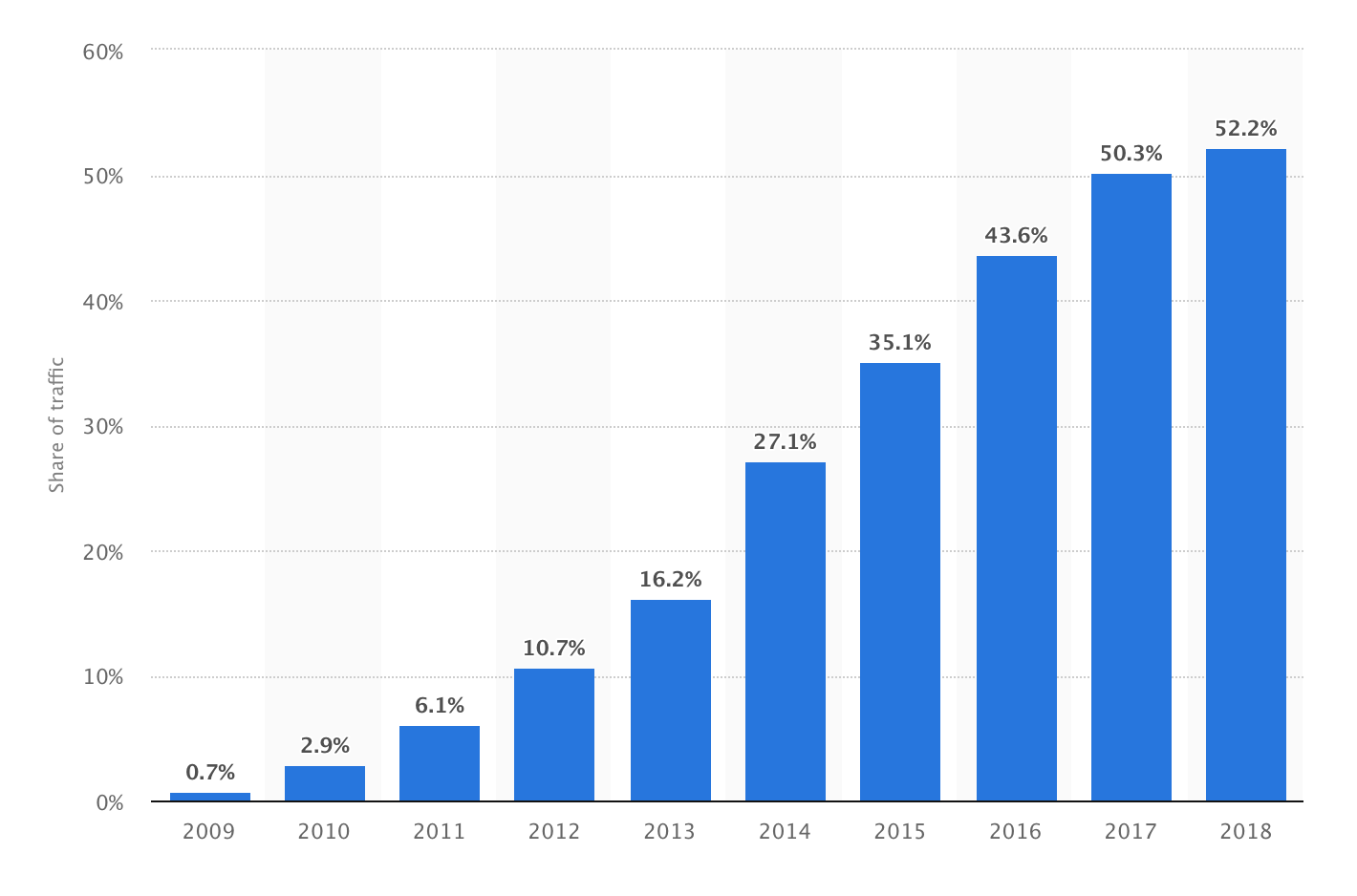Written by: Bethany Fagan
2019 is officially upon us. With the flood of new info, it’s easy to feel overwhelmed while browsing your LinkedIn newsfeed. It’s a never-ending list of updates, upgrades, evolutions of tools and technology, and digital marketing trends.So my goal with this post is to give you the TL;DR version of all of those predictions. Recently I spoke alongside other industry experts where we discussed what trends we feel will make an impact in 2019. Keep reading to learn how you can shape your marketing strategies in the coming year.1. Marketing teams will create and distribute more video content
Video will continue to dominate, that shouldn’t be a big surprise. Its ubiquitousness on the web is driven by sites like YouTube and Vimeo, which might make this point an unlikely prediction for 2019.But many businesses STILL haven’t devoted serious resources to the creation and distribution of video content, and this represents a significant opportunity in 2019. According to Wordstream, marketers who utilize video grow revenue 49% faster than their camera-shy competitors.New video-focused platforms and features like Instagram stories and Facebook live video are expected to continue to grow in popularity. Businesses will want to take advantage of the opportunities this growth presents. You might also want to consider repackaging existing marketing assets to make them easier to digest.It’s likely we’ll also continue to see video usage grown on LinkedIn too. But keep in mind, just because it works for your favorite SaaS company doesn’t necessarily mean it will work for your brand.Businesses that do have the right topic, tone, and audience, however, will drive customers using video with ever-greater efficacy.2. Integration of different marketing channels will become more common
Traditional marketing channels will retain their importance as essential drivers of new customers. But the integration of previously disparate channels has been a notable occurrence throughout last year, and it’s expected to pick up pace even more in 2019.Different types of communication channels, such as SMS, mobile, and live chat, should be built into the customer journey to enable streamlined, effective communication.Look for things like the ability to phone a sales rep right after receiving an email, or transition to in-person live chat while browsing a webpage. Also, expect to see an uptick in the ability to follow-up through automated Facebook chat messages.3. Personalization will remain a top priority
Collectively, we generate about 2.5 quintillion bytes of data per day. Organizations are awash with data. More than ever before, customers are expecting that they put it to good use.Personalization is no longer an optional benefit. Current and potential customers now expect tailored experiences at both the beginning and end of the sales cycle.What’s more, SMBs are figuring out how to collate and interpret the huge amount of data they have access to, with lots of third-party tools.In 2019, we expect the customer experience will be weighted more heavily when making a decision than other factors. Ultimately, companies will start to ask: “How can I engage with prospects and leads in ways other than email and provide a truly personal experience?”The gatekeepers of these communication channels are also becoming increasingly averse to content they deem irrelevant to their users. Phone carriers, for example, are very aggressively filtering mass messages. The antidote? One-to-one, personalized content.4. Marketing tech will better cater to mobile
Mobile is pretty much where everything is headed. But current automation and marketing tools haven’t kept up with this shift as a lot of solutions still don’t cater to mobile. Because of this, the use of tech has often meant a deterioration of personal communication on mobile. While automation toolshave provided an array of improvements for desktop, there’s still a lot of friction. In 2019, we expect that software providers will start to remedy this problem.Most people just aren’t paying enough attention to mobile. Ryan Chapman, CEO of Fix Your Funnel, says that 90% of Facebook ad traffic for his campaigns goes to mobile. This is one percentage number you won’t want to ignore this year.
Because of this, the use of tech has often meant a deterioration of personal communication on mobile. While automation toolshave provided an array of improvements for desktop, there’s still a lot of friction. In 2019, we expect that software providers will start to remedy this problem.Most people just aren’t paying enough attention to mobile. Ryan Chapman, CEO of Fix Your Funnel, says that 90% of Facebook ad traffic for his campaigns goes to mobile. This is one percentage number you won’t want to ignore this year.

